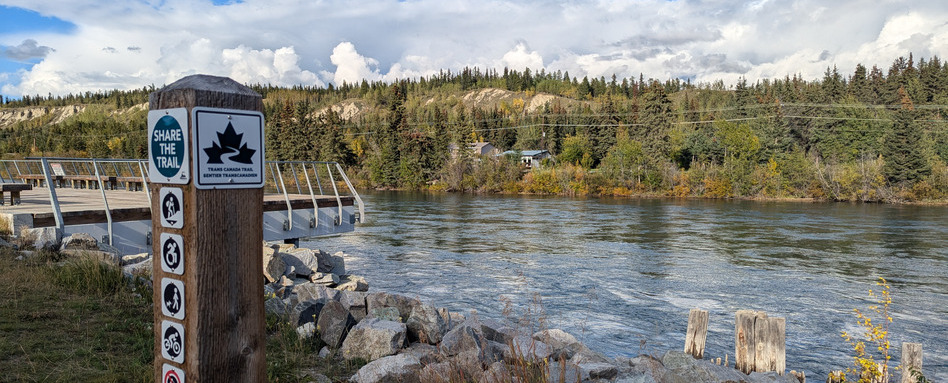Accurate signage is critical for a trail and becomes of even greater importance when the scope of the Trans Canada Trail is taken into consideration. Without a consistent and predictable system of signage in place, trail users are, at best, hindered, and at worst, may find themselves lost. Whether trail users are travelling through forest trails or urbanized areas, there is an abundance of opportunities to lose the trail. By having a consistent signage system, the chance of such a scenario is dramatically reduced. Trail users will know when and where to expect signage, as well as the purpose of each sign.
Consistency within a signage system is often overlooked; an assumption is made that if instructions are placed, they will be found. To illustrate this point, imagine a roadway without consistent signage. In Canada, we know that stop signs are red, placed at the near-right corner of an intersection, and provide a specific instruction. Imagine if a stop sign was placed on the left side of the road instead; you can envision the problems it would cause. Likewise, if a stop sign were replaced with a yellow intersection sign, drivers would be aware of the intersection, but would lack the direction to stop. The same holds true for trail signage. If a directional indicator is provided, but in the incorrect location, there may be uncertainty of where or why to turn. If a trail blaze is provided but is positioned poorly, it may be missed.
In these guidelines, you will find resources and best practices on how to design and implement a successful signage plan. They are for guidance only, and all signage projects should be reviewed with local, provincial and federal authorities’ requirements.

Should you seek additional assistance:
- Various signage guidelines are available, such as one published by Parks Canada. Please refer to Parks Canada Exterior Signage standards for further information.
- In large municipalities, there is often an active transportation plan and a government department(s) that handles trail elements, standards and regulations, including signage. If your trail is part of, or intersecting, a larger municipal trail system, it is recommended that you contact this department to discuss your trail signage plans. Most larger cities and towns have systems in place and will be a great resource, providing direction to ensure your signage plan is in keeping with the city’s aesthetic look and needs. In small towns or within a rural trail network, it is suggested that local authorities be contacted so you can speak directly with Roadworks, Parks and Recreation, or any other applicable departments that handle trail signage in that area.
- It is also recommended that you speak with a local signage manufacturer who is up to date with local by-law building codes for signage. For extensive signage planning, contracting a signage consultant is recommended. Landscape architects are a great resource and may provide these types of services in your area.





